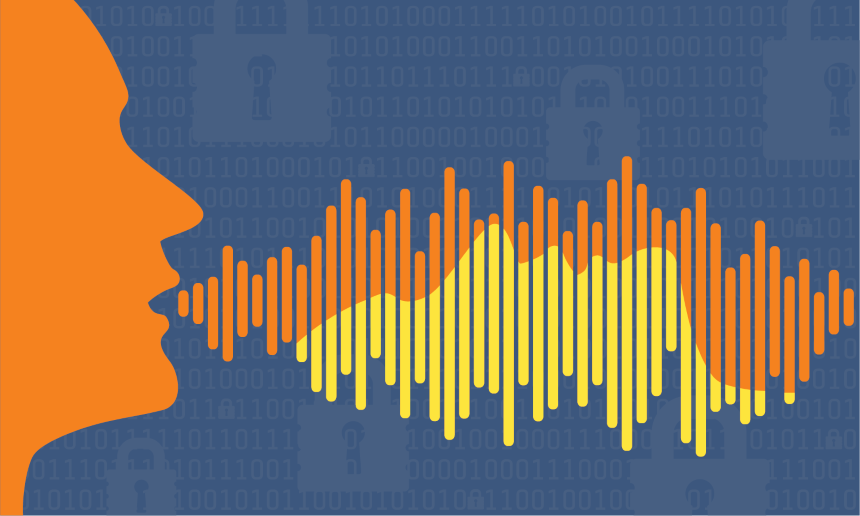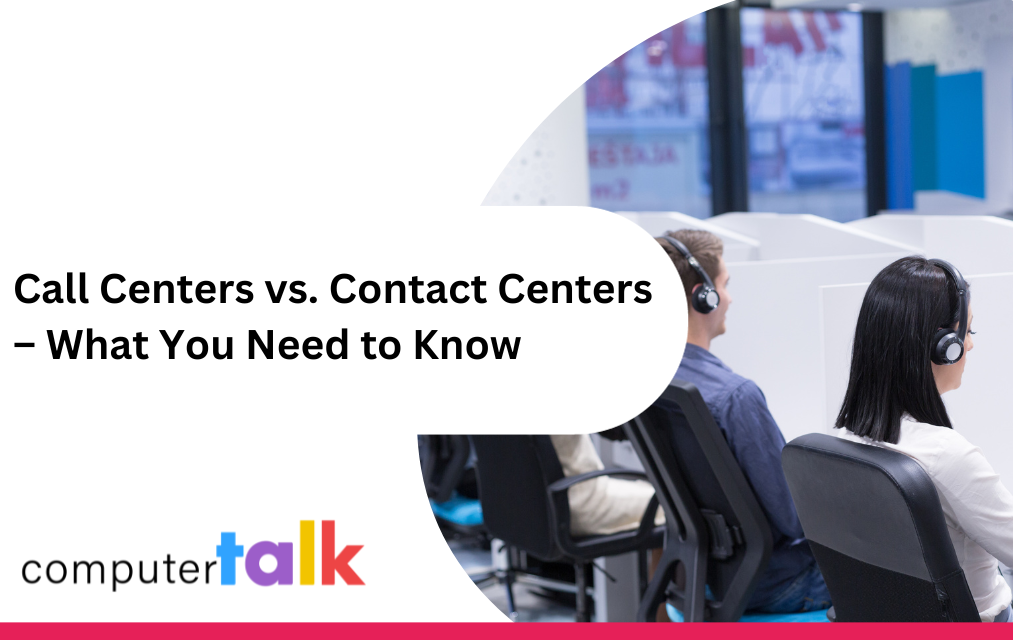Featured
Voice Biometrics in the Call Center: The Ultimate Guide
by Nicole Robinson | Published On October 9, 2024

Voice biometrics technologies are becoming increasingly valuable in the call center.
Not only do these solutions help businesses improve security and minimize fraud risks by offering a more advanced way to authenticate users, but they can improve customer experiences too.
With voice biometrics, customers can easily access accounts and information, without having to remember complex passwords and PIN codes. This streamlines the customer journey and can even reduce call handling times, making teams more efficient.
In this article, we’ll introduce everything you need to know about voice biometrics software, from the benefits of implementation to the challenges you may need to overcome.
What is Voice Biometrics for Call Centers?
Voice biometrics, sometimes referred to as “voice authentication” software in the call center, is intelligent software that identifies the unique characteristics in a person’s voice to determine their identity. Voice authentication tools in the call center capture and analyze various attributes in a person’s voice, from their pitch and accent to their tone, cadence, and the speed of speech.
Since no two people have the exact same vocal characteristics, this technology makes it easier to accurately authenticate users based on a “voice print”, similar to a human fingerprint.
Although voice authentication in the call center isn’t foolproof, it does significantly enhance security by reducing reliance on passwords, usernames, and other data that can easily be stolen. Plus, it enables a more convenient customer experience, allowing companies to rapidly authenticate users as soon as they call their business, without asking for extra data.
How Voice Biometrics in the Call Center Works
In a call center, voice authentication tools leverage a combination of AI, natural language processing, and data analysis tools to enhance caller security. Usually, there are various steps involved in the process of implementing voice biometrics, including:
- Enrollment: This is when a voice recognition system captures a sample of a user’s voice during the onboarding process. The sample can be obtained from previous recordings, or by asking customers to speak certain phrases and sentences during an initial call.
- Extraction: The AI-powered system analyzes the voice sample to determine distinguishing characteristics, such as accent, speech speed, tone, or pronunciation. Those extracted features are then processed using algorithms, to create a “voiceprint” for each user.
- Verification: Whenever a customer contacts a call center, the system captures their live voice and compares it to the pre-existing voiceprint in the system. The system then confirms the person’s identity based on the match rate between the two samples.
Benefits of Voice Biometrics in the Call Center
Using voice biometrics in the call center delivers a range of benefits. Not only is it an excellent way to improve security and minimize fraud, but it can improve contact center efficiency too. Some studies suggest passive voice biometrics solutions can reduce average call handling times by up to 45 seconds.
The biggest benefits of voice authentication and biometrics in the call center include:
Enhanced Security and Fraud Reduction
Voice biometrics offers a more advanced way to secure accounts and data in the contact center. Rather than relying on passwords and codes that can easily be stolen to grant access to specific tools and data, companies can distinguish individuals based on a unique voiceprint. This voiceprint is much harder to steal or replicate than a password.
The unique nature of each individual’s voice means businesses can use biometrics to implement additional safeguards against issues like account fraud. Some call centers even use voice biometrics as an element of their multifactor authentication methods for team members. This can give them more control over which users can access certain records or pieces of software.
Improved Efficiency and Reduced Costs
Implementing voice biometrics into the call center can significantly improve team efficiency and productivity. Team members spend less time asking users “authentication questions” or approving passwords, and more time focusing on delivering exceptional service.
By speeding up the authentication process, biometric technologies reduce the average handling time for customer calls, allowing agents to work faster. This can help companies to reduce labor costs.
Plus, the enhanced security offered by biometric solutions further reduces the costs associated with handling fraud incidents, such as investigation costs and the cost of repairing the damage to a company’s reputation. Since specialized hardware isn’t necessary for voice authentication, companies can even get started with minimal upfront costs.
Better Customer Experiences
Intelligent voice biometrics solutions in the call center can improve customer experiences in various ways. First, they speed up average call times, and improve agent productivity. This means customers generally spend less time waiting in queues. Secondly, they eliminate some of the frustrating aspects of traditional authentication methods.
Customers don’t have to spend time trying to remember complex passwords or answer security questions. They can instantly access the service and support they need, just by saying a certain phrase. Advanced AI solutions can even empower companies to deliver more personalized experiences to customers based on their data, after a user is authenticated.
Implementing Voice Biometrics in the Call Center
Although implementing voice biometrics solutions in the call center doesn’t usually require any specialized hardware, there are various steps involved in getting your system set up correctly. Here’s a quick guide to the three most important steps in the implementation process.
Step 1: Choosing the Right Software
First, you’ll need to choose the right software for your voice authentication solution. The right technology should leverage cutting-edge AI capabilities, such as automatic speech recognition and natural language processing algorithms, to ensure it can accurately analyze speech patterns.
It’s also worth looking for a system that integrates smoothly with your other contact center technologies, such as your Interactive Voice Response (IVR) system, your customer relationship management (CRM) tools, and any other relevant platforms. An all-in-one suite of AI tools, like ComputerTalk’s AI solutions can give you instant access to a range of valuable capabilities at once.
For instance, ComputerTalk enables voice authentication, speech analytics, sentiment analysis, virtual agents, and automated translation and transcription.
Step 2: Training Staff Members
Once you’ve implemented your voice biometrics software into your call center environment, providing extensive training to team members is crucial. Employees should be familiar with how the software works, how to use it, and how to implement additional precautions for user security when necessary.
Provide clear training showing your team members how the system works and how to onboard new users. Additionally, ensure they have access to best-practice guides on how to troubleshoot problems and inconsistencies. Updating your training regularly based on changing technology trends and new compliance standards will be crucial to unlocking the full value of your system.
Step 3: Creating an Intuitive Onboarding Process
Finally, making sure you onboard customers effectively is crucial to accessing the full security-focused, and user experience benefits of voice biometrics in the call center. Ensure your team members know how to explain the benefits of biometric authentication to customers and walk them through the process of sharing voice samples with the system.
A simple onboarding experience, which involves repeating a few key phrases, should help to increase user adoption. However, make sure your team members can provide advice to customers who might struggle with the technology based on their language, accent, or other factors.
Challenges and Considerations for Voice Biometrics
Demand for voice biometrics in call centers is increasing, as companies recognize the benefits this technology can have on both security and customer experiences. By 2032, Fortune Insights predicts the market for voice biometrics technology will be worth a massive $15.69 billion.
However, although voice authentication technology can be extremely beneficial, there are still a few challenges to overcome. For instance:
Issues with Accuracy
Voice biometrics technology isn’t guaranteed to be 100% accurate at all times. Variations in everything from call quality to background noise, and even the customer’s voice (caused by sickness or emotional state), can lead to inconsistencies.
With that in mind, it’s usually a good idea for businesses to implement additional authentication methods for sensitive conversations. For instance, if customers are making a payment, you may use multi-factor authentication alongside a voiceprint to authenticate them.
Privacy Concerns
Privacy concerns are another consideration. Leveraging voice biometrics involves collecting and storing sensitive data. If someone gains access to the database your system uses to match voice prints to live information, the risk of fraud increases.
Using the right software, with built-in encryption and security features, is crucial to preserving security and maintaining customer trust.
Initial Costs
Plus, it’s worth noting that while voice biometrics solutions are becoming more accessible to businesses of all sizes, there will be initial costs to consider. The price of purchasing the software, as well as managing ongoing maintenance, updates, and staff training can vary depending on the vendor you choose. The key to overcoming this issue is selecting your vendor carefully.
The right voice biometrics vendor will offer access to intuitive, affordable tools that can integrate with your system easily, without the need for additional technical support, reducing costs. Plus, the best vendors will ensure their systems are pre-designed to deliver exceptional accuracy, reducing the need to train and fine-tune your system internally.
Future Trends In Voice Biometrics for Call Centers
As privacy and security issues in the call center continue to evolve, the demand for voice biometrics solutions is growing. Reports suggest that fraud in the contact center is growing, particularly in specific industries, like finance and healthcare.
Increased Adoption
This shift is leading to increased adoption of biometric solutions that can improve call center security and preserve customer trust. At the same time, the tools available for voice authentication are becoming more advanced and intuitive. Evolutions in AI algorithms are leading to technologies that are more effective at recognizing human voices with different accents, and in various languages.
Increased Effectiveness
Some AI-powered solutions are also becoming more effective at distinguishing between background noises and human voices, which reduces false authentication rates. Systems enhanced with machine learning can even improve their accuracy over time, learning from various different samples of a user’s voice, so they can accommodate changes based on a customer’s emotional and physical state.
New Technology
However, it’s worth noting that advanced AI solutions are leading to new threats too, such as the rise of voice deepfakes created with generative AI. To address this issue, innovative vendors are experimenting with new “spoof detection” algorithms that allow systems to examine a voice more carefully, to distinguish between recordings and live interactions.
The Value of Voice Biometrics in Call Centers
Ultimately, voice biometrics in the call center can deliver incredible benefits to companies, enabling them to improve efficiency, reduce costs, and enhance the customer experience. The right technology can optimize security in the call center, and help you stay vigilant in the face of evolving threats.
ComputerTalk’s intuitive AI-powered solutions for the call center not only enable access to accurate and reliable voice authentication, but they also empower companies to leverage intelligence in a range of ways. With ComputerTalk, you can enhance self-service, create smarter IVR flows, and even access in-depth insights into customer experiences and sentiment.
Learn more about how you can boost security and enhance the customer experience with ComputerTalk’s AI tools today. Reach out to our team for insights into our cutting-edge solutions, or explore our voice authentication systems here.
More from our blog
 By choosing a Microsoft Teams Certified Contact Center, your organization can expect valuable features and capabilities for better performance and customer experiences.
By choosing a Microsoft Teams Certified Contact Center, your organization can expect valuable features and capabilities for better performance and customer experiences.
 You already know that delivering consistently great experience to your customers is crucial to success in any industry. But, as customer expectations continue to evolve, understanding what customers want and need from your contact center can be complex.
You already know that delivering consistently great experience to your customers is crucial to success in any industry. But, as customer expectations continue to evolve, understanding what customers want and need from your contact center can be complex.
 Uncover the critical differences between call centers and contact centers, and choose the right model for enhanced customer service.
Uncover the critical differences between call centers and contact centers, and choose the right model for enhanced customer service.

